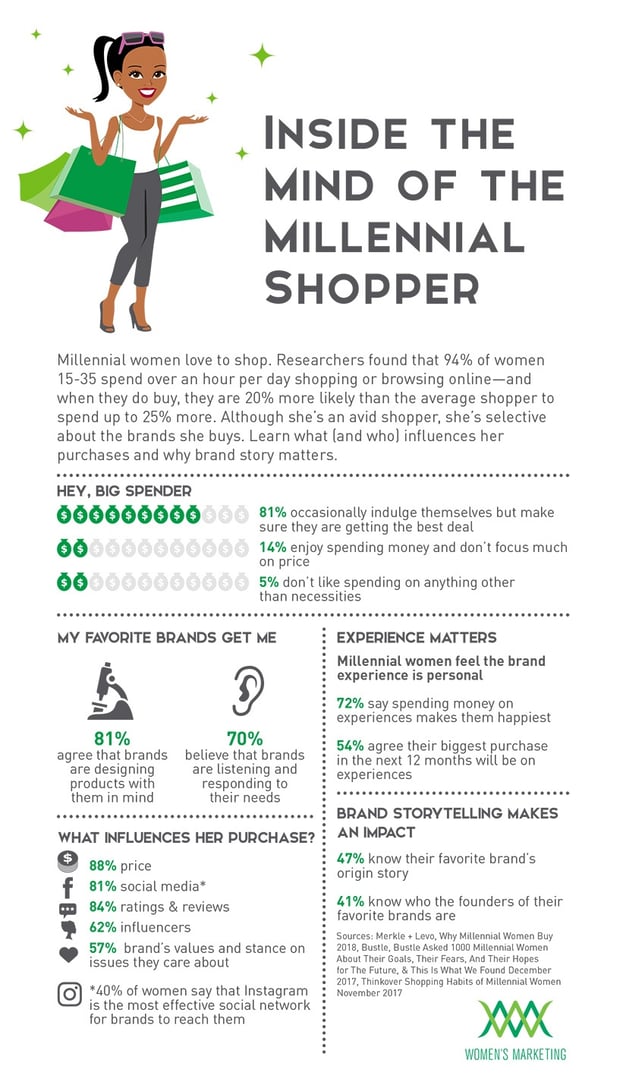Part
01
of three
Part
01
Self-Guided Personal Development - Demographics
People who spend money on self-guided personal growth and development programs/workshops/experiences are likely to be female Millennials based in the U.S. or North American region. Their preferred social media platforms are likely to be YouTube, Facebook, and Instagram. Below is an overview of the findings.
Age Range
- According to a 2019 Marketdata report on the U.S. self-improvement market, Baby Boomers were initially the main consumers in the personal growth/self-improvement market. However, while Boomers are still an important group, Millennials are now driving the market due to their growing number. This paywalled report has been referenced or mentioned by several resources, including MarketResearch.com, WebWire, and Deals On Health.
- A 2018 Forbes article corroborates the above findings, albeit using older statistics. The article, which quotes a 2015 research report, states that 94% of Millennials made "personal improvement commitments," and reported they would be willing to spend up to $300 monthly self-improvement, twice as much as Boomers. This compared to 84% and 81% of Baby Boomers and Gen X, respectively.
- A 2020 article reported that an industry expert agreed that Millennial spend twice as much as Boomers, and that studies have shown that Millennials spend "almost a fortune on self-care" programs and routines. Millennials are also more likely to follow through on their self-improvement commitments, based on statistics for New Year's Resolutions in 2019, 2020, and 2021.
Gender
- According to a 2017 BrandonGaille article, much more women than men make use of the Personal Development market/industry. It explains that women are more likely to look for ways to improve themselves due to the societal approach towards gender which holds men to a lower standard.
- A 2018 MarketWatch article also reported that women were more likely to make self-improvement commitments. This conclusion was based on the findings from an annual YouGov survey on New Year's Resolutions in the U.S. The survey found that "self-improvement-related resolutions" were more popular with U.S. women than men.
- Additionally, various statistics/reports featured in the Deals On Health report showed that women make up the grand majority of self-help industry consumers. More women have set personal development goals and they account for about 62.5% of the buyers of self-help books.
Geographical Scope
- According to GrandView Research and Market Data Forecast, North America accounted for over 35% of the global Personal Development market. The U.S. alone accounts for over $11 billion, which is more that Europe's market size of $10.96 billion. Asis Pacific is expected to experience the fastest growth of all regions.
Preferred Social Media Platforms
- In the U.S., YouTube (92%), Facebook (78%), and Instagram (79%) are the most popular social media platforms among female Millennials. Globally, YouTube (88%), Facebook (83%), and Instagram (67%) also rank highest among Millennials.
Influencers
- Although resources such as Feedspot and Alberto Nodale provide lists of the top Personal Development Influencers, none identifies the ones that are specific to Millennials. The top overall influencers by follower count include Gary Vaynerchuk, Jay Shetty, and Brené Brown.
Research Strategy
To provide the required demographic data, the research team searched extensively through the public domain for any data from media resources, industry experts, market research reports, credible surveys, and statistics resources. However, while there was some data that could be used to provide U.S.-specific demographic information, there was none for the global scope.
The research team also explored the available reports on the Personal Development Market published by GrandView Research, PRNewswire, VMR, and Market Data Forecast. We looked at the companies featured in the reports, and checked for any information on their customer demographics that would be helpful in our quest. However, we could find no such information. Therefore, the research team has provided the age and gender for U.S.-based consumers as proxies for the global data. We believe that this would be closer to the overall data since the U.S. makes up almost one-third of the global market, based on the statistics provided above. For the 'Geography' section, we have provided the global regional distribution since it was available.

